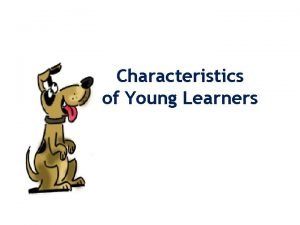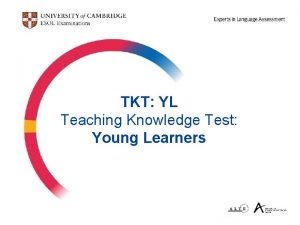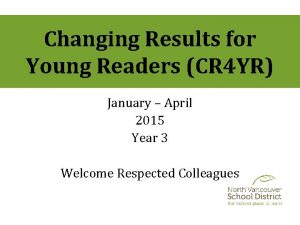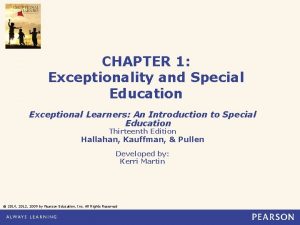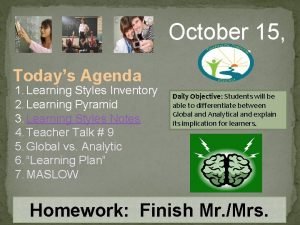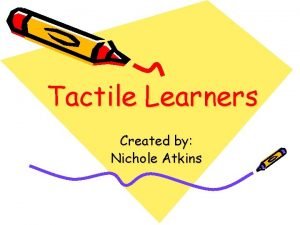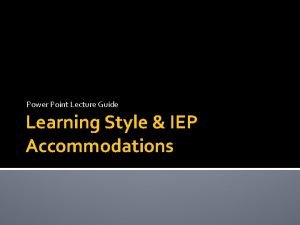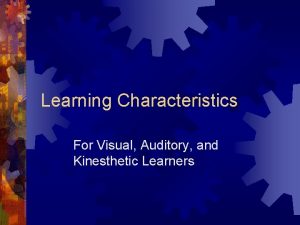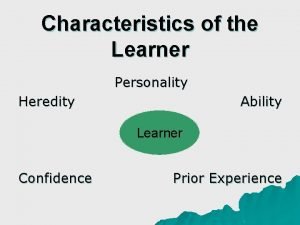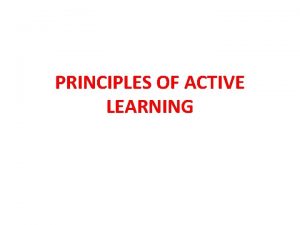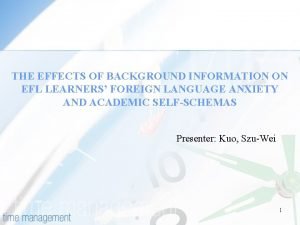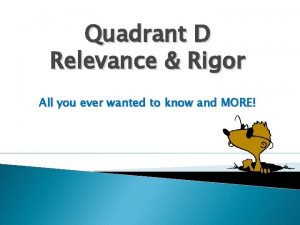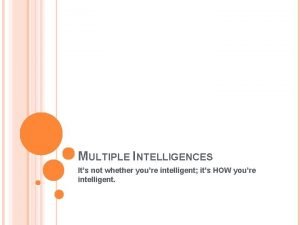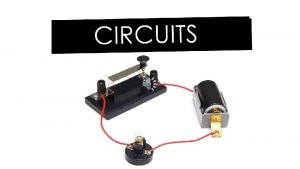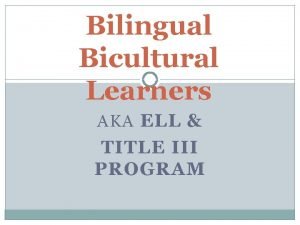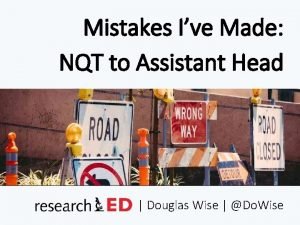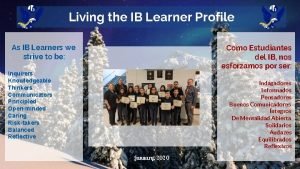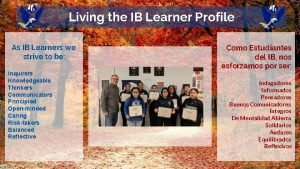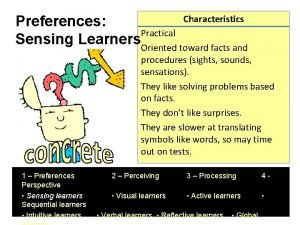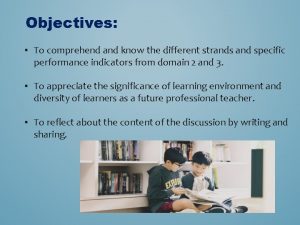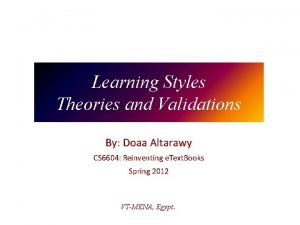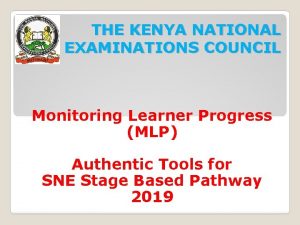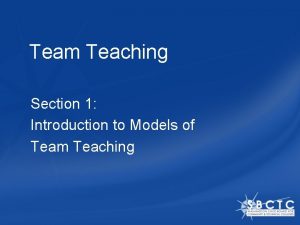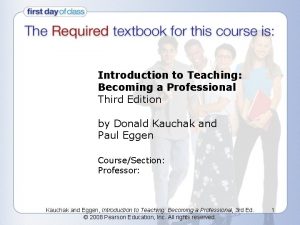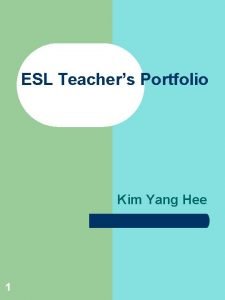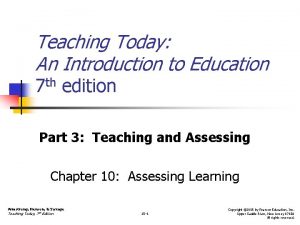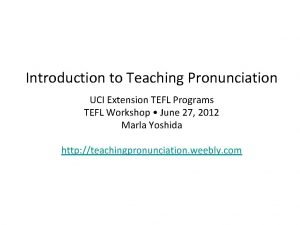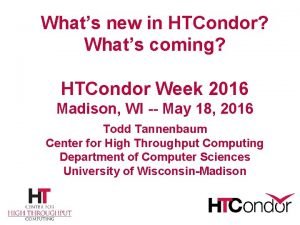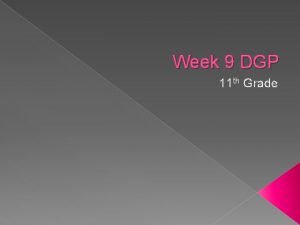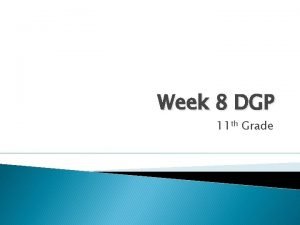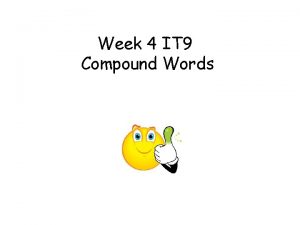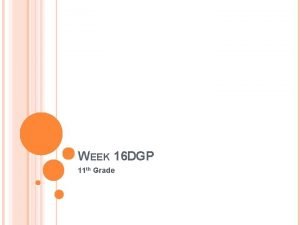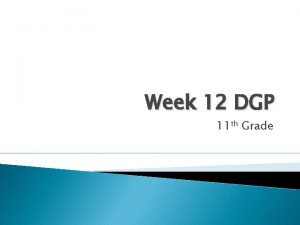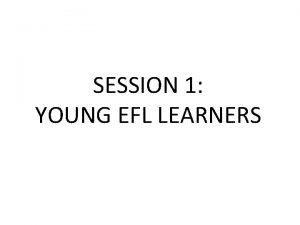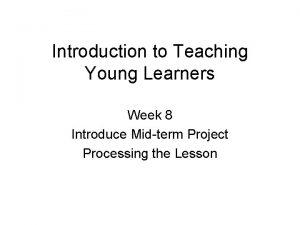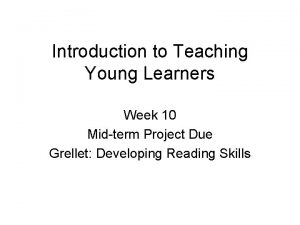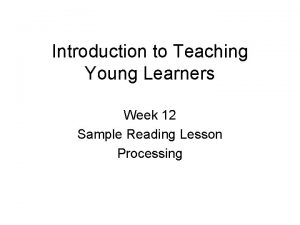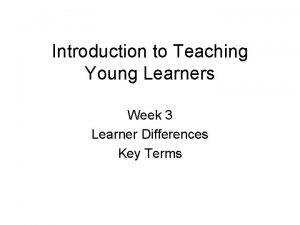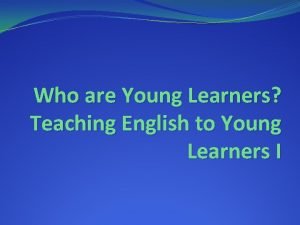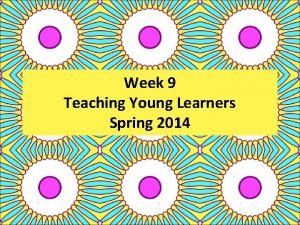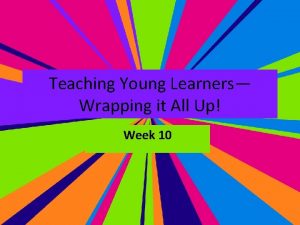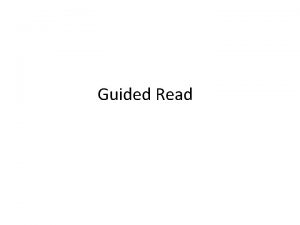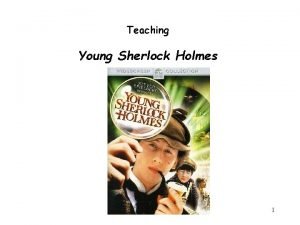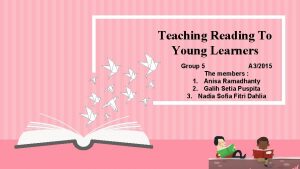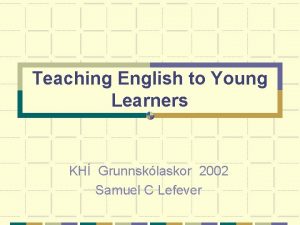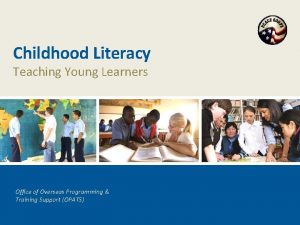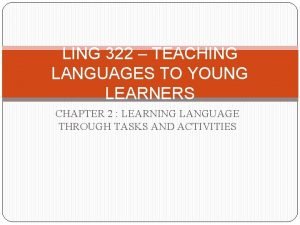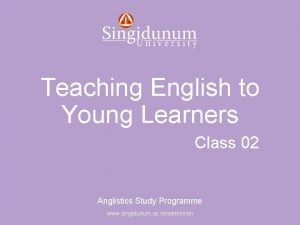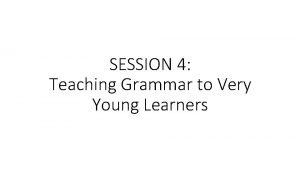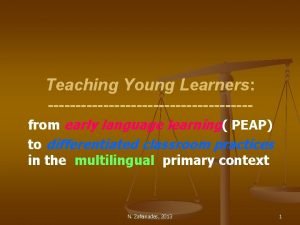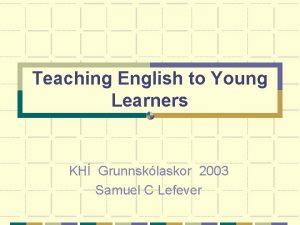Introduction to Teaching Young Learners Week 4 5






















































- Slides: 54

Introduction to Teaching Young Learners Week (4) 5 Listening Sample Lesson Processing

Housekeeping: Name Cards Name: _________ English Nickname: _____ Email address: _______ Phone #: _________ Something about your self: ____________________ Your Picture

Homework for Next Week • Read: “Paul’s Child Centered Learning” pages 73 -88 and answer the questions on page 71

Listening Lesson – “THE PARK” • Beginner Level Ss Elementary to Middle School • What do Ss already know? • Ss already know some park-related vocabulary, basic sentence formation and present continuous tense.


A park

A: What can you do in a park? B: I can walk in a park.

A: What can you do in a park? B: I can ____ in a park. What can you do in a park? A: I can ____ in a park. What can…?

What do you see?


A pigeon


Pigeons in a park

Which one is a pigeon? 1 2


Statue of Liberty

1 2


A hoop and a stick

Hoops or Sticks?

Hoops

A hoop or a stick?

A stick


A paper bag

Yes or No?

Yes or No?

1 2


Entrance

An entrance?


Circle what you hear

A: What did you circle? B: I circled ____. What about you? A: I circled…… B:

Listen for What’s Wrong

Word List • • Hoop Horse Two Park Sitting Pigeon Man • • Looking Nearby Paper Pigeons Bird Eating Playing

Answers • • Park Sitting Pigeon Looking Nearby Paper Pigeons • • Bird Eating Playing Hoop Man Horse Two

Review I You He She It We They

Describe What You See


A: What did you circle? B: I circled ____. What about you? A: I circled…… B:

Draw Your Favorite Park • Do you have a favorite park? • I do:

Tell Your partner about your park

Processing • How was the whiteboard used in the park lesson? • Why was this important? How did it help with Ss learning? • How did it help T stay organized?

White Board for Park Lesson Keywords Non-keywords Review for Present Continuous Verbs

Processing • How did T check/teach vocabulary? Do you know the method that was used? • How did T assure Ss mastery of the key words in this lesson? Hint: Think about what the learners did during the lesson. Do you know the method that was used?

Processing Questions • When did I give the listening questions, activities or tasks, before or after the listening? Why?

Processing Continued • What is the purpose (objective) of a listening lesson? • Where in the lesson was the objective achieved? What activity had the Ss show the most comprehensive or “in depth” understanding?

Processing • Listening Lessons typically follow the following pattern – Pre – During – Post

In the Pre-Stage 1. 2. 3. 4. 5. activate schema assess prior knowledge generate interest in the topic build rapport with our Ss elicit and/or pre-teach the key vocabulary words.

In the During Stage • Ss are given tasks to give them a reason to read or listen • Tasks are given before Ss read or listen • Task allow Ss to demonstrate understanding • Tasks are sequenced – General to Specific – Easy to Difficult – Concrete to Abstract

In the Post Stage • Ss have a chance to move beyond the text • Ss are allowed to personalize the topic or theme • Ss integrate other skills • Ss make “text to self” and “text to world” connections by doing tasks that allow them to see how the topic is relevant to them and their world

Processing Continued • Look at the lesson plan and fill in the missing stages. – Pre – During/Post (one time) – Post • Look at the lesson plan on p. 152 and try to decide which steps are pre – during – post

Processing Continued • If the Ss were speaking, what did the T provide on the WB or PPT? Why did the teacher provide it? • Why did the teacher have the Ss read and fill in the blanks of the cloze before letting the Ss listen?
 What is grammar
What is grammar Teaching young learners english
Teaching young learners english Young learners characteristics
Young learners characteristics Tkt: yl resources
Tkt: yl resources Changing results for young learners
Changing results for young learners Remedial teaching means
Remedial teaching means Exceptional learners: an introduction to special education
Exceptional learners: an introduction to special education Week by week plans for documenting children's development
Week by week plans for documenting children's development Microteaching is a scaled down teaching
Microteaching is a scaled down teaching Global vs analytical learners
Global vs analytical learners Tactile learner definition
Tactile learner definition Global vs analytical learners
Global vs analytical learners Kinesthetic learner
Kinesthetic learner Eager learning algorithm
Eager learning algorithm Learn to learn
Learn to learn When is cognitivism beneficial for learners
When is cognitivism beneficial for learners Visual iconic learner
Visual iconic learner Code of ethics for professional teachers philippines pdf
Code of ethics for professional teachers philippines pdf Characteristic of learners
Characteristic of learners Assistive technology for english language learners
Assistive technology for english language learners Active learning principles
Active learning principles Questioning and discussion techniques in the classroom
Questioning and discussion techniques in the classroom Background information for learners
Background information for learners Rigor/relevance framework
Rigor/relevance framework National program for gifted filipino
National program for gifted filipino Musical intelligence famous person
Musical intelligence famous person The learners will be able to
The learners will be able to English language learners
English language learners Reading strategies for english language learners
Reading strategies for english language learners Graham nuttall the hidden lives of learners
Graham nuttall the hidden lives of learners Ib learners profile
Ib learners profile Ib learners profile
Ib learners profile Equal protection for english language learners
Equal protection for english language learners Global learners characteristics
Global learners characteristics Technology for diverse learners
Technology for diverse learners Active and passive learners
Active and passive learners Diversity of learners
Diversity of learners Impulsive learners
Impulsive learners Knec monitoring learners' progress
Knec monitoring learners' progress Fairlie early learners
Fairlie early learners Introduction of team teaching
Introduction of team teaching Introduction to teaching
Introduction to teaching Teaching portfolio introduction
Teaching portfolio introduction Teaching today an introduction to education
Teaching today an introduction to education Chapter 1 teaching as a profession
Chapter 1 teaching as a profession Uci tefl
Uci tefl Conclusion paragraph format
Conclusion paragraph format Htcondor week
Htcondor week Htcondor week 2022
Htcondor week 2022 Med tech week
Med tech week Reading arthur miller's play the crucible
Reading arthur miller's play the crucible Dgp week 8
Dgp week 8 Arm compound words
Arm compound words Dgp week 16
Dgp week 16 Dgp week 12
Dgp week 12


